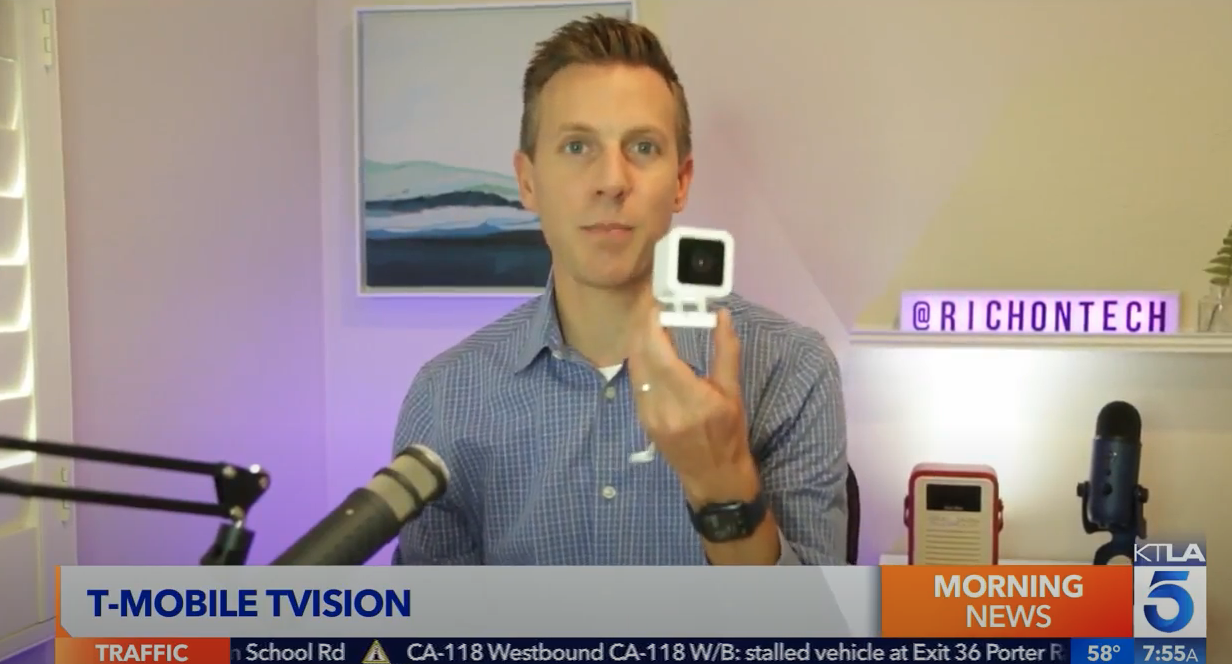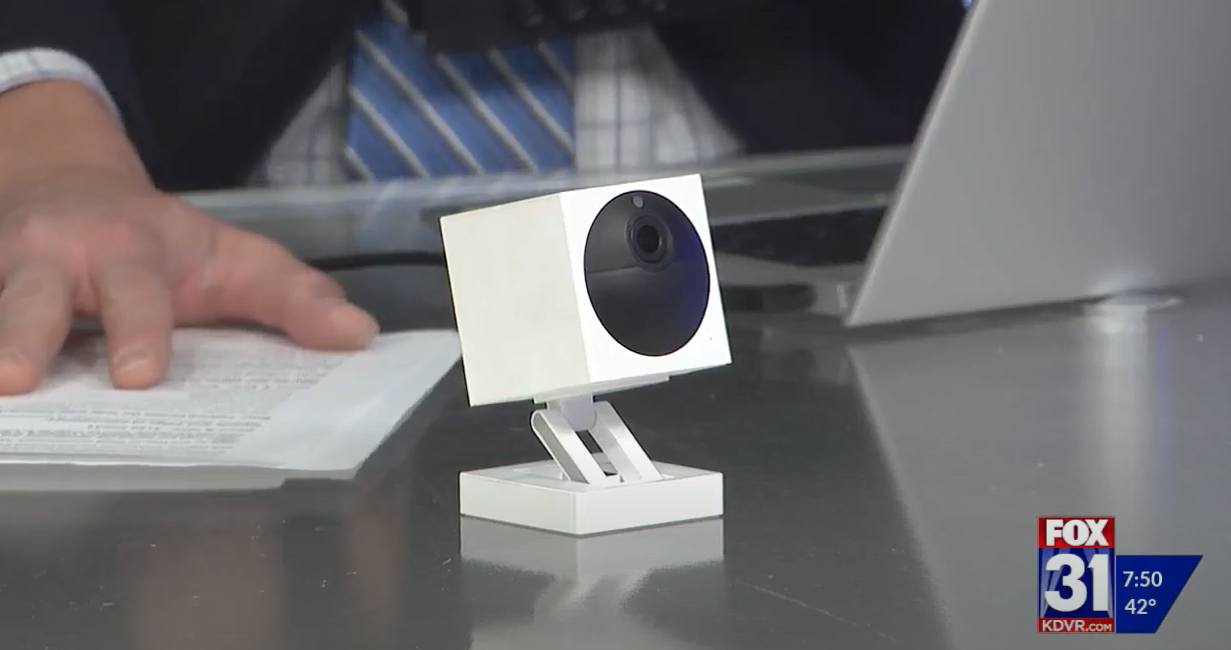
Case Study: How Wyze Labs acquired 5 million customers with earned media and TVEyes Broadcast Monitoring Services
At Wyze, every single product we sell has a razor-thin profit margin.
We do this because our business strategy relies on disrupting the massive $301 billion consumer electronic market. That is, offering high-end electronics at entry-level prices.
So how do we promote a product that has no margin to allocate towards advertising?
We get writers, reporters, and journalists to talk about our products with their audiences, at no additional cost to us. Meaning, we earn their interest instead of paying for their interest.
This is the single most crucial strategy we've used at Wyze to acquire over 5 million users since our launch in October 2017.
And while it might be easy to say what we do it's another story explaining how we do it.
But that's precisely what I hope to accomplish in this case study.
My name is Scott Wilson, and I'm the Sr. Director of Product Marketing at Wyze Labs.
I'm going to use this blog post to share with you the same strategy my team and I have been using for the last three years. The process that follows is the same one that has helped us acquire more than 5 million users.
Customers from Earned Media Results
By taking advantage of earned media and using TVEyes media monitoring services to help expedite the research and relationship-building process, Wyze has acquired over 5 million users in 3 years without a massive advertising budget.
The Wyze brand name is mentioned several times per week across TV and radio, allowing us to continuously reach out to new reporters and build relationships for future media mentions. And the only reason we're able to track this is because of TVEyes top media monitoring services.
As you'll find out through the steps below, media relations is a skill of relationship building and management, and TVEyes broadcast monitoring tools help us with those relationships.
Step 1: Identify media outlets most likely to share your story with TVEyes
The first step is research. It might sound boring, but it's critical to start here before doing anything else.
With research, we're going to answer the holy grail of all questions: who is most likely to care about my message enough to take the time to write about it?
Historically, this question would be answered by sitting in front of the TV or radio for hours on end watching and listening to morning, noon, and evening broadcasts across multiple channels.
While watching, you would be waiting for stories related to the product or service you're selling.
Why? Because you're looking for a reporter that already has a high affinity to talk about the space you're in. If a reporter talks about tech and you sell tech, there's a good chance they'll be interested in covering you. But if the reporter talks about tech and you're into furniture making, it probably doesn't make sense for them to cover you.
Luckily for us, this method of monitoring broadcasts and listening to keywords and key phrases has been expedited tenfold by using the TVEyes broadcast monitoring company.
Instead of sitting in front of the TV and radio for hours waiting to maybe hear a relevant segment, we quickly search the entire U.S. broadcast system in mere seconds using the TVEyes platform, allowing us to reinvest our saved time into other important tasks.
At Wyze, we use TVEyes media monitoring to search for several key phrases to help us identify reporters with high affinities to write about us. A few examples of key phrases we monitor are:
- Home security
- Break-ins and burglaries
- Bargain technology
- Smart home
- Baby monitors
- Pet monitors
- Competitor products
When we search for these or create alerts, we sift through dozens of segments to understand if our story will fit nicely into an existing reporter's segments.
After narrowing down our list of high-affinity stations and reporters and creating a list in a spreadsheet tool, we move on to collect their contact information in step 2.
Step 2: Find the contact information of the reporters you're going to pitch
Gathering a list of media outlets and reporters' names was a big step, but it was one of many.
The next step to earning media mentions is directly reaching out to your selected reporters with your story.
To do that, we need to locate their contact information (usually email addresses) - a task much easier said than done.
Because finding contact information can be an entire subject within itself, I've written a separate blog post that shows the same list of PR tools I use to find media contact information.
Generally speaking, there are three main methods:
- Writing or calling into the station you're looking to pitch (free)
- Using a 3rd party media database (paid)
- Finding them on public social media channels like Twitter (free)
Once you've created your media list and located their contact information, it's time to move onto step 3: pitching the reporters.
Step 3: Pitch a relevant, engaging, and newsworthy story
Now that you've got your outlet and your reporter, it's time to compose a new email and fill it with persuasive copywriting.
But what do you write?
You write something that checks off at least 2 of the 3 points below:
- Something that is relevant
- Something that is interesting
- Something that is newsworthy/timely
For example, if July 4th is right around the corner and you're a local bakery, you might pitch --minute July 4th recipes (engaging) to create patriotic-themed (relevant) cakes.
Or, if you're in real estate, you might pitch ways homeowners (relevant) can take advantage of the lowering interest rates (timely).
For Wyze, we like to work directly with tech reporters that review new gadgets. Otherwise, we like to send in videos to news stations that may have been captured within the local community. For example, a few meteor showers have been caught using our camera and later featured on local news stations.
Once you've pitched your story and had some back-and-forth with the producer or reporter, it's time to move onto step 4, where you'll watch for your segment to air.
Step 4: Follow up and build a relationship
Another historically time-intensive step in media relations is watching and waiting for your segment to air - especially if you're unsure whether or not the reporter is inclined to cover your story.
Sometimes, the reporter may decide not to cover your story at all, or a more newsworthy story may take priority.
Whatever the case, TVEyes broadcast media monitoring has again replaced the need to watch and wait for your media mention to air diligently.
At Wyze, we use TVEyes to quickly set up keyword alerts, so any time our product, service, or brand is mentioned, we receive an email with the specific television or radio clip. We can then use the TVEyes sharing and reporting feature to send it to our leadership teams and cross-functional partners.
For Wyze specifically, we've set up several keyword alerts because our name is a bit tricky when it comes to captioning. For example, sometimes our name is recorded as "wise" instead of "Wyze". But this is a super simple fix by just adding the word "cam" or "camera" next to it.
When we get keyword alerts, I like to shoot the reporter a note letting them know I saw the segment air, and I love how they covered it. If there are any negative connotations in the segment (for example, if they're reviewing a product on air and they have critiques), I make sure to let them know we appreciate the honest feedback and our product managers are on it.

Media Monitoring Wrap up
Promotion isn't about tricks and secrets - it's about thinking differently.
At Wyze, we've been forced to think creatively and figure out how to build brand awareness without using traditional advertising methods like digital ads.
As a result, we became exceptional at finding media opportunities and understanding what reporters like to write about.
The steps laid out above have been used by my team and I consistently over the last several years and have been the foundation for driving traffic to our website.
If you're just beginning your journey, or if you're hoping to refine an existing one, remember that persistence is key.
Some pitches will fall flat - maybe because the story is not as interesting as you thought it was, or perhaps you're pitching the wrong person.
Sometimes, a story resonates so well with an audience that it catches on and changes your business overnight.




